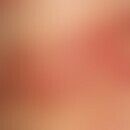Synonym(s)
DefinitionThis section has been translated automatically.
Solanum dulcamara (solari = analgesic, dulcis = sweet, amarus = bitter), the so-called "bittersweet nightshade", or simply called bittersweet, forest nightshade, water vine, wolfberry, etc., is like Solanum tuberosusm (potato) or Solanum lycopersicum(tomato) a species of the genus Solanum from the nightshade family (Solanaceae).
Solanum dulcamara is the parent plant of Dulcamarae Stipites, the official extract of this medicinal plant.
In Europe, also in North Africa and Asia native semi-shrub with creeping, branched basal axis. The climbing or prostrate, finger-thick woody stem grows up to 2 m long and reaches heights of 30 to 200 cm. Its stem leaves are petiolate and different in shape, usually lanceolate, often heart-shaped at the base. Dark purple petals, bright yellow stamens. Flowering time: June to August. Simultaneously ripe red, orange and green still unripe berries.
Due to the content of toxic steroid alkaloids, bittersweet nightshade is one of the poisonous plants. However, the ripe, then red berries are almost without alkaloids, but can cause scratchy throat, vomiting, intestinal cramps and diarrhea. Furthermore, mydriasis, dizziness, drowsiness, headache, visual disturbances, possibly also hallucinations - in severe poisoning death by circulatory collapse / respiratory paralysis.
Phytotherapeutically, the dried, 2- to 3-year-old stems (bittersweet stems - Solani dulcamarae stipites) are used, see under Dulcamarae stipites.
Pharmacodynamics (Effect)This section has been translated automatically.
All plant parts contain steroidal alkaloids(solanine, soladulcidine, solasonine, solamarin) saponins (dulcamaretic acid, dulcamaric acid), dulcamarin (bittering agent), tanning agents, pectins.
The alkaloid content is highest in green berries, lower in leaves and stems and lowest in ripe fruits.
You might also be interested in
Field of application/useThis section has been translated automatically.
The bittersweet stem is the parent plant of Dulcamarae stipites.
The dried 2-3 year old stem pieces (Stipites) are used as drug, which are processed to standardized extracts (see below Dulcamarae stipites). Constituents are: steroidal alkaloidal glycosides (0.1-0.4%), steroidal saponins (0.2%) and bitter substances.
Systemic applications: extracts of the plant are available as alcoholic extracts - (contains ethanol and fortified wine) or in tablet form.
Naturopathic external applications: available in ointment form (commercial preparation: Cefabene®); contains besides extracts of Solanum dulcamara ethanol and cetylstearyl alcohol; may burn if the skin is still irritated with inflammation. A quadrant test = open exposure on affected skin is recommended!
Cosmetics. Extracts from the stems of the plant are used in cosmetic formulations under the INCI name: Solanum dulcamara extract.
Note(s)This section has been translated automatically.
For children, 30 to 40 unripe berries can be fatal due to the high concentration of steroid alkaloids.
LiteratureThis section has been translated automatically.
- Reuter J et al. (2010) Which plant for which skin disease? Part 1: Atopic dermatitis, psoriasis, acne, condyloma, and herpes simplex. JDDG 10: 788-796
- https://arzneipflanzenlexikon.info/bittersuesser-nachtschatten.php.
- Wenigmann M. (2017) Phytotherapy medicinal drugs, phytopharmaceuticals, application. Urban & Fischer, pp. 83-84





